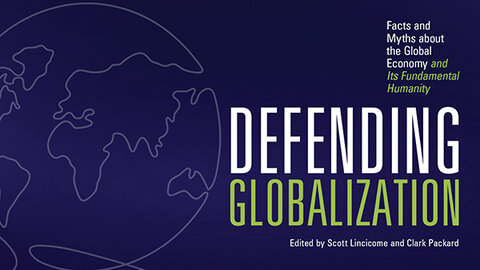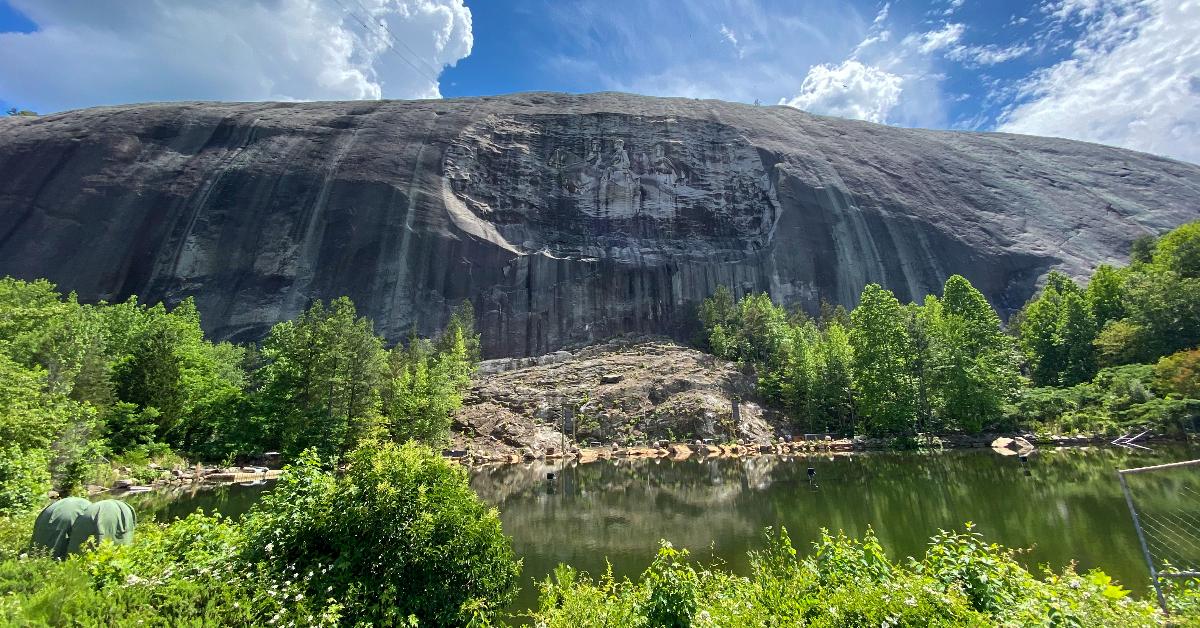The wonderful thing about liberty, property rights, and markets is that if you don’t like something, you don’t have to be a part of it. Under pure and beautiful capitalism, consumers are sovereign: they’re not forced to consume something, and their value creation isn’t expropriated to finance what someone else thinks is important.
A liberal order based on individual property rights thus becomes a conflict-minimizing system in that we can leave one another be and only cooperate when it serves both parties. If there’s something you dislike about my opinions, religion, or behavior, you don’t have to associate with me. You can just look away and invoke that long-forgotten American ideal of “live and let live.”
In contrast, when things are commonly owned—or unowned—anything less than consensus overrules somebody’s idea of what is a good use of that resource. Cue all the problems of our contemporary politics: immigration, (corporate) welfare, public education, military spending, etc. What’s worse is that the overruling institution is subject to capture and decay, meaning that the wrong person or ideology will eventually get on top.
That’s the reason you need “knave-proof” conditions, in the words of the Economist journalist Duncan Weldon. Sooner or later some despicable type will gain control over the institution that overruled your current enemies, and the values you shoved down their throats will be swiftly overturned.
A Past Not Worth Defending?
A hundred miles or so from the Mises Institute grounds on West Magnolia Avenue in Auburn, Alabama, stands a large hill with a peculiar monument. Georgia’s Stone Mountain is a recreational area owned by the state of Georgia, with a large park around the iconic geologic feature with the same name—and it frequently gets into hot water.
Even though it’s branded “Atlanta’s favorite destination for family fun,” you look at it from another angle and a different kind of brand emerges: the world’s largest “bas-relief artwork,” featuring three Confederate Civil War leaders (basically a Mouth Rushmore of the South). And it’s on a mountain where the Klan used to meet.
In times of moral purity and extreme intellectual intolerance, this is a recipe for societal conflict.
With all due respect to the intricacies, the race conflicts, and the specific history of America’s South, it’s difficult for me (foreigner, white, Nordic) to weigh in on the meaning of this monument. But perhaps my distance lets me see the infected conversation differently.
Some say the carving on Stone Mountain was placed there anachronistically to intimidate blacks; others say it honors the legacy, heroism, and suffering of those who died in America’s bloodiest war. Either way, the carving wasn’t finished until the 1970s, long after the characters and their deeds lived and died, but so was Mount Rushmore, finished in 1941 while honoring American statesmen from a century past (or more). Still, it seems a little out of place and hasn’t yet acquired the necessary distance in time for us to abstract away from objectionable portions of the past.
The Atlanta History Center’s documentary from earlier this year, Monument: The Untold Story of Stone Mountain, has me asking all these questions about values and monuments, about past ideas and their use in contemporary society. Is it harmful and oppressive? Should we take it down? Blow the mountain to smithereens? It seems that every time somebody puts on an event in the vicinity, someone gets upset and the cycle of sensitivity receives another jolt.
Ryan McMaken on mises.org reflected on this a few years ago:
The reason for the renaming [of a University of Colorado fountain] was the same as with any memorial or monument designed to honor a person or idea—to create an emotional connection and familiarity with the person or idea connected to the place; to communicate a certain view of history. When approaching the problem of government monuments and memorials, we encounter the same problem we have with public schools. Whose values are going to be pushed, preserved, and exalted? And, who’s going to be forced to pay for it?
Do you blow up all the wonderful things that a sinful past once created? The churches and colosseums, Saint Basil’s Cathedral, and the pyramids? The Colosseum was an arena for animalistic slave executions (i.e., gladiatorial combat), yet what modern visitors to Rome see is a stunningly beautiful creation that endured for two millennia and a reminder of the empire that was once there. Is anybody under the illusion that keeping the Colosseum standing is a moral justification of anything that the Roman empire did, a looming threat that a violent empire might one day return? Of course not.
Balliol College in Oxford, the oldest university in the world (save for Bologna, perhaps), wouldn’t admit women for the vast majority of its history. Still, we keep their hallowed halls and academic facilities despite the misogynistic flaws of generation after generation of scholars who walked them. All Souls College Library—known to us awestruck students as the “Codrington Library” for its eighteenth-century founder, slaver, and plantation-owner Christopher Codrington—recently about-faced and renamed the library and threw in some scholarships to relevant demographics. Changing names and giving money are sure ways to undo past harms, apparently.
Fine, maybe some symbolic good-faith action is warranted even if the compensation is rewarding entirely different people than those against whom the harms were committed. (Perhaps I should just be thankful they didn’t bring in the bulldozers . . .)
The problem with publicly owned and managed monuments like Stone Mountain is that rulers inevitably pick a side, pitting one group of people against another. In contrast to markets and liberty, government behavior (both when they are wrong and when they are right) becomes conflict maximizing. We have to fight to the teeth to have our side rule. If some want the mountain’s carvings there but others don’t, only one set of people can win out.
So here’s a revolutionary idea: How about we privatize it?
Naturally, my inclination is to say that government shouldn’t be in the business of, well, anything, but even accepting some of the public goods arguments about the necessity of the state, there’s no need for (state) governments to nudge a certain view of history or even run parks in the first place.
Let whoever values the park and the carvings support them with their dollars and relieve everyone else from having their tax dollars channeled to that purpose. If I want to build ugly, offensive monuments on my land, what business is that to everyone else?
Also, How about We Care Less?
The other option in a free society is to look away. I don’t like my neighbor’s house or the color of his car or the offensive T-shirts he’s wearing when trotting around in the yard. So what? They’re not mine, so maybe I just need to make peace with it.
At the level of public monuments, (state) governments enforcing a certain view of history or a set of oppressive values also carries a subtle threat: “we” like these guys, and these guys did some nasty things—some of them to people like you. That might be different than a T-shirt . . . but unless (and until!) the threat is credible, it’s not that different.
Plenty of wonderful things that our ancestors bequeathed us were made in ways we disapprove of today, on the backs of people who received no recognition and little benefit from the work. Still, we don’t run around with bulldozers and dynamite to obliterate all that was once made under the influence of wrongthink, rebuilding society’s physical and natural environment with the right morals.
Slaves were used in the building of the White House and the Capitol—yet nobody calls for those symbolic and historic building to be leveled or recompensated in the name of past oppression and moral flaws.
Individuals change and learn, and society’s morals and beliefs evolve; outdated statues and monuments are pretty good reminders of that. We look at them with hindsight knowledge of what their words and deeds resulted in, and sometimes mistake that hindsight for erudition. When we try to tear down statues or rename buildings—or update children’s stories or accompany “problematic” characters with a jar of condemning monologues—we say we’re too fragile to see what our ancestors once did or thought.
It’s a comforting idea that whatever we have achieved, whatever morals we currently hold, is the pinnacle of all history’s eternal truths. That kind of hubris is terrifying. And it’s a short step to realize that our descendants, therefore, will look upon our flaws and exaggerate them into our most constituent features. They’ll tear down everything we made, lining up the bulldozers.
A lot of the things we’ve done in the early 2000s might even warrant some serious, wide-eyed blank stares from our children: bombing weddings, mandating experimental treatments, denying reality, oppressing naysayers, printing outrageous amounts of fiat money, and denying and crippling energy systems.
Pray they overlook the worst we did and maybe instead see some of the good.
























